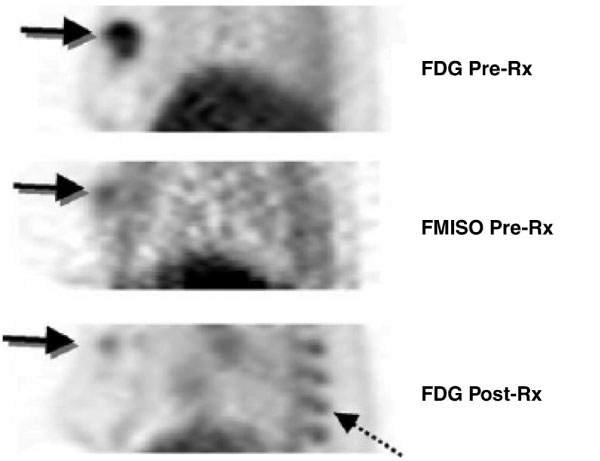Figure 2.

Breast tumor hypoxia as a predictor of drug resistance. A patient with a large, right breast tumor underwent 18F-fluorodeoxyglucose (FDG) and 18F-fluoromisonidazole (FMISO) positron emission tomography (PET) pre-therapy (Pre-Rx; top and middle) and after approximately ten weeks of chemotherapy (Post-Rx; bottom). Images are thick sagittal images, similar to medial-lateral oblique (MLO) mammography views. The pre-therapy FDG study showed uniformly high FDG uptake throughout the tumor. FMISO PET showed uptake suggestive of tumor hypoxia, but only close to the center of the tumor (arrow). Post-therapy images show a dramatic reduction in the extent and intensity of FDG uptake with residual activity in the part of the tumor that had FMISO uptake pre-therapy. Residual viable tumor was found at surgery. Marrow uptake of FDG was also seen post-therapy (dashed arrow) because of granulocyte colony-stimulating factor administered for marrow support as part of the treatment. (Reproduced from [158].)
